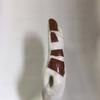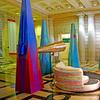American Democracy: A Great Leap of Faith
- WASHINGTON, DC
- /
- June 10, 2017
This summer, comprehensive exhibitions in Washington, DC, will display artifacts that document the birth and evolution of American democracy, providing a timely reminder of the principles that allow citizens in a pluralistic society to create change.
The Smithsonian’s National Museum of American History will unveil a suite of exhibitions in its newly transformed wing on June 28. Under the theme, The Nation We Build Together, all the exhibitions on the renovated second floor will tell the story of America’s founding and future as a country built on the ideals and ideas of liberty and opportunity, featuring:
- Two signature exhibitions, “American Democracy: A Great Leap of Faith” and “Many Voices, One Nation”
- A changing gallery with the inaugural exhibit, “Religion in Early America”
- A refreshed presentation of “Within These Walls…,” which showcases 200 years of American history in one house
In the program space, “Unity Square,” visitors will find hands-on activities and a spotlight on one of the museum’s national treasures, the Greensboro Lunch Counter.
The museum began renovating the 120,000-square-foot west wing of its 53-year-old McKim, Mead and White-designed building in 2012. Each floor has a central theme: The first floor focuses on innovation and opened in 2015; the second floor, with 30,000 square feet of exhibition and program space, will explore the founding principles of the nation and how they have evolved over time; it will open this summer.
Cost for the full renovation, including exhibitions, programs and endowed positions is $58 million in federal funds, with an additional $100 million to be raised through private support from corporations, associations, individuals and foundations. Highlights for “The Nation We Build Together” include:
The Linda and Pete Claussen Hall of American Democracy
American Democracy: A Great Leap of Faith
What happens when a people decide to govern themselves? America’s national treasures come to life in this compelling exhibition that examines the bold experiment to create a government “of the people, by the people and for the people.” “American Democracy: A Great Leap of Faith” explores the history of citizen participation, debate and compromise from the nation’s formation to today. Through objects such as Thomas Jefferson’s portable desk, used to draft the Declaration of Independence; the inkstand Lincoln used to draft the Emancipation Proclamation; and the table on which Elizabeth Cady Stanton wrote the Declaration of Sentiments, the exhibition will focus on the changing political ideals and principles of the nation, citizenship in a pluralistic society and political participation and engagement.
Hall of the American People
Many Voices, One Nation
“Many Voices, One Nation” takes visitors on a chronological and thematic journey that maps the cultural geography of the unique and complex stories that animate the Latin emblem on the country’s Great Seal and the national ideal: E pluribus unum, Out of many, one. Through almost 200 museum artifacts and about 100 loan objects, this exhibition shows how the many voices of the American people have contributed to and continue to shape the nation and its communities, from its earliest beginnings to the present. Through objects such as a painted elk hide from the Southwest, circa 1693, a Norwegian bowl brought by 19th-century immigrants, a gold miner’s trunk, symbols of union and liberty such as Uncle Sam and Columbia and a baseball helmet used by Boston Red Sox player Carl Yastrzemski in the 1970s, the exhibit explores the never-ending process of becoming one nation.
The Nicholas F. and Eugenia Taubman Gallery
Religion in Early America (Inaugural Exhibition)
The role of religion in the formation and development of the United States is at the heart of this one-year exhibition that explores the themes of religious diversity, freedom and growth from the colonial era through the 1840s. National treasures from the museum’s own collection will be on view, such as George Washington’s christening robe from 1732, Thomas Jefferson’s The Life and Morals of Jesus of Nazareth, also known as “The Jefferson Bible,” and Wampum beads. Significant objects on loan will include Massachusetts Bay Colony-founder John Winthrop’s communion cup, circa 1630; a Torah scroll on loan from New York’s Congregation Shearith Israel, founded in 1654; a chalice used by John Carroll, the first Roman Catholic bishop in the U.S. and founder of Georgetown University; and a first edition of the Book of Mormon. The objects will represent the diverse range of Christian, Native American and African traditions as well as Mormonism, Islam and Judaism that wove through American life in this era.
Within These Walls…
“Within These Walls…,” showcases 200 years of American history as seen from the doorstep of one house that stood from Colonial days through the mid-1960s in Ipswich, Mass. The 4,200-square-foot exhibition highlights five ordinary families whose lives within the walls of the house became part of the great changes and events of the nation’s past. The largest artifact in the museum, the Georgian-style, 2½-story timber-framed house was built in the 1760s, just 30 miles north of Boston and stood at 16 Elm Street until 1963 when Ipswich citizens saved it from destruction. Inside this house, American Colonists created a new genteel lifestyle, patriots set out to fight the Revolution, and an African American struggled for freedom. First opened in 2001, the exhibit is being updated in 2017–18 to reflect new research, including insights about the former enslaved man originally known only as Chance. This research will add to the understanding of slavery and liberty in Revolutionary-era New England. The exhibition is made possible by the National Association of Realtors.
Wallace H. Coulter Unity Square
The Greensboro Lunch Counter
American Experiments
The “whites only” Greensboro Lunch Counter where four African American students sat beginning Feb. 1, 1960, at the Woolworth’s store in Greensboro, N.C., will be the centerpiece of Unity Square. Their request for service was refused, and the students remained seated in protest, beginning a six-month protest and boycott. The counter was desegregated that July and the sit-in was a watershed moment in the civil rights struggle. Visitors to the space can engage with “American Experiments,” several hands-on experience stations, designed to inspire the public to actively engage in American civic life. The activities will address the themes of the signature exhibitions and bring to life the interplay and participation necessary for a healthy democracy. Each station is designed to engage multiple visitors in a game-like activity that promotes conversation and discussion as well as a way to reflect upon democracy through each individual’s personal perspective.
For more information, visit http://americanhistory.si.edu.

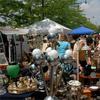


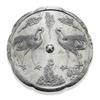




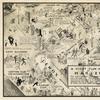

![Offering a Truce [Bested], 1895, is estimated to sell for between $1,300,000 and $1,800,000 on March 22, 2014, for The Russell: An Exhibition and Sale to Benefit the C.M. Russell Museum. Offering a Truce [Bested], 1895, is estimated to sell for between $1,300,000 and $1,800,000 on March 22, 2014, for The Russell: An Exhibition and Sale to Benefit the C.M. Russell Museum.](/images/c/a8/20/Dec10_Offering_a_Truce__Bested_300dpi100x100_c.jpg)

